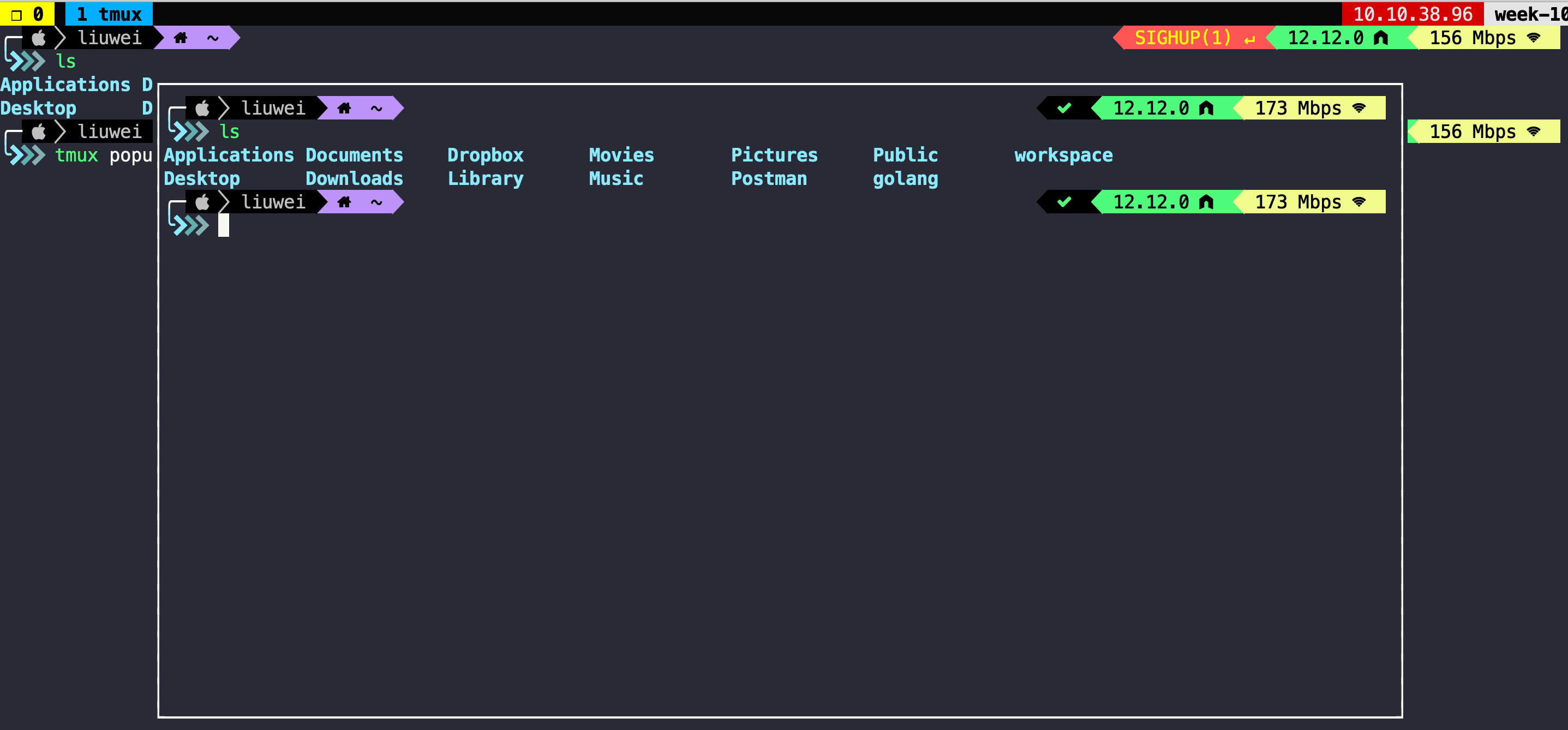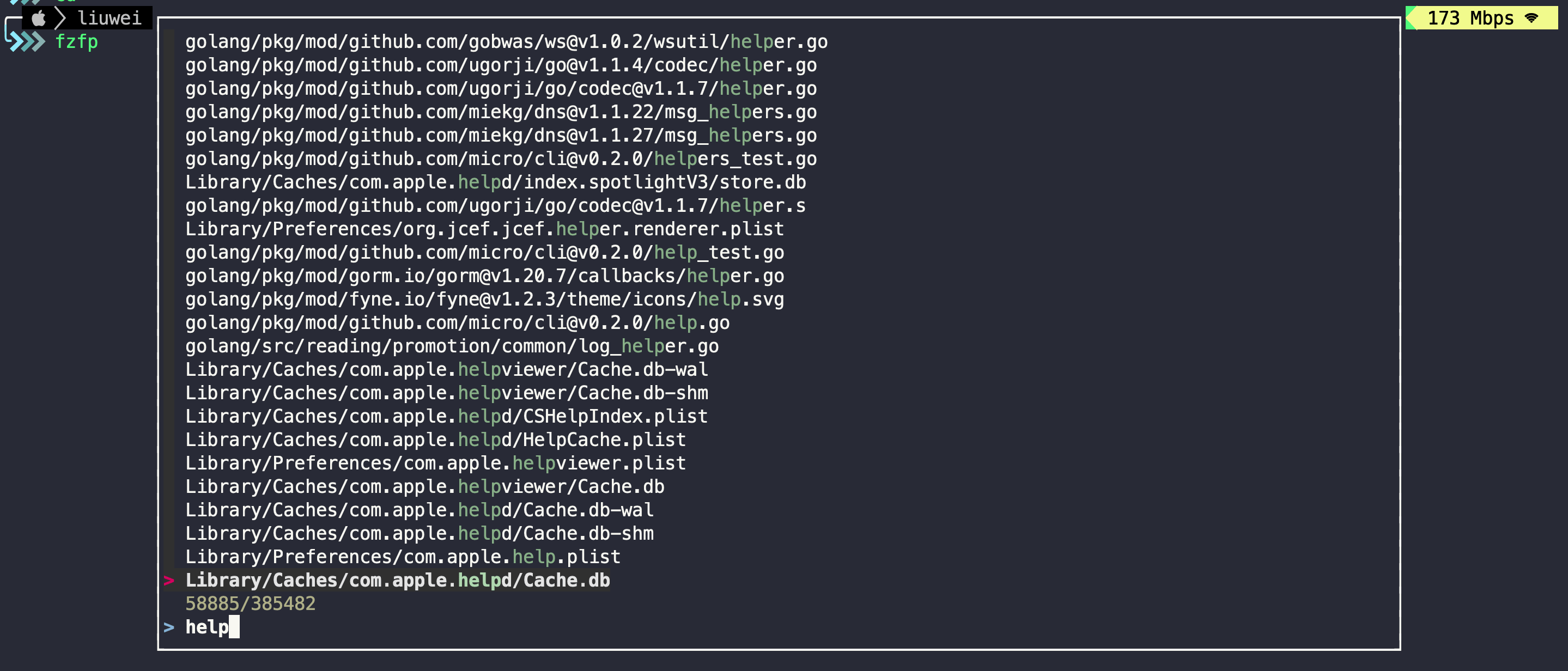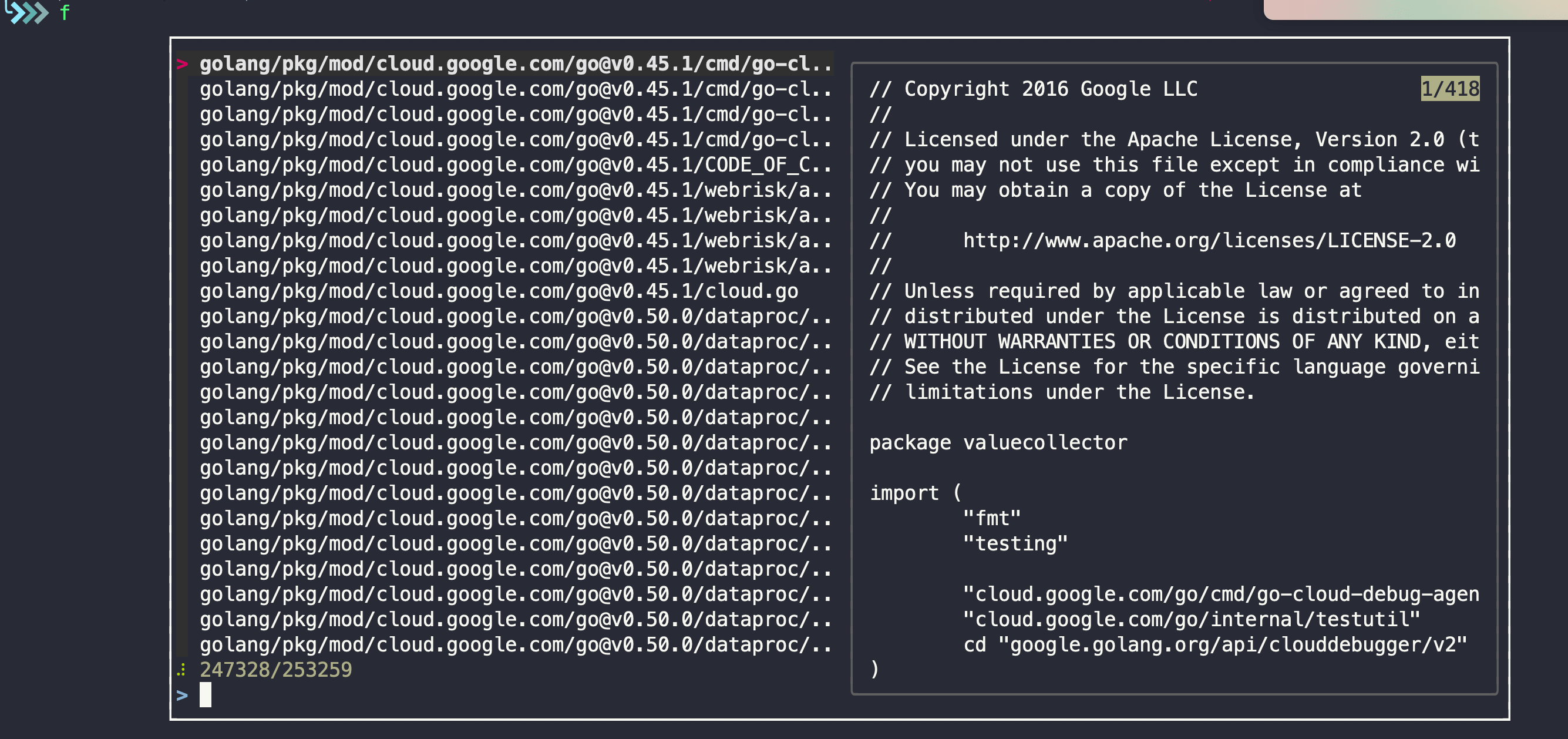1. 介绍 tmux 已经支持 popup功能, 但是暂时还没有发布到 stable release 版本, 所以需要使用的需要在开发分支上编译使用, 即tmux 版本需要>=3.2
2. 使用 2.1 升级 tmux 确认下 tmux 版本, 如果小于3.2就开始升级.
https://github.com/tmux/tmux/releases 下载最新的 release, 编译安装
1 2 ./configure && make sudo make install
注意: 升级后如果开启了tmux-resurrect, session会直接卡死
需要把session 杀完后, 并 tmux kill-server, 再进一次 (巨坑!!!)
2.2 tmux 内使用 弹出一个80%宽高的弹窗
1 tmux popup -w 80% -h 80%
创建两个别名:
1 2 alias p='tmux popup -w 80% -h 80%' alias pp='tmux popup -w 90% -h 90% "tmux attach -t popup || tmux new -s popup"'
3. fzf-tmux (弹窗使用fzf) 在tmux里通过弹窗形式使用 fzf, 参考: https://github.com/kevinhwang91/fzf-tmux-script/
3.1 安装 下面是fzfp脚本, 给个执行权限, 扔到环境变量下, 如 ~/.fzf/bin/
1 2 3 4 5 6 7 8 9 10 11 12 13 14 15 16 17 18 19 20 21 22 23 24 25 26 27 28 29 30 31 32 33 34 35 36 37 38 39 40 41 42 43 44 45 46 47 48 49 50 51 52 53 54 55 56 57 58 59 60 61 62 63 64 65 66 67 68 # !/usr/bin/env bash fail() { echo "$1" >&2 exit 2 } fzf=$(command -v fzf 2>/dev/null) || fzf=$(dirname $0)/fzf [[ -x "$fzf" ]] || fail 'fzf executable not found' if [[ -n $TMUX_POPUP_NESTED_FB ]]; then eval "$TMUX_POPUP_NESTED_FB" && exec fzf "$@" fi tmux -V | awk '{match($0, /[0-9]+\.[0-9]+/, m);exit m[0]<3.2}' || exec fzf "$@" args=('--no-height') while (($#)); do arg=$1 case $arg in --height | --width) eval "${arg:2}=$2" shift ;; --height=* | --width=*) eval "${arg:2}" ;; *) args+=("$arg") ;; esac shift done opts=$(printf '%q ' "${args[@]}") [[ -z $height ]] && height=${TMUX_POPUP_HEIGHT:-80%} [[ -z $width ]] && width=${TMUX_POPUP_WIDTH:-80%} envs="SHELL=$SHELL" [[ -n $FZF_DEFAULT_OPTS ]] && envs="$envs FZF_DEFAULT_OPTS=$(printf %q "$FZF_DEFAULT_OPTS")" [[ -n $FZF_DEFAULT_COMMAND ]] && envs="$envs FZF_DEFAULT_COMMAND=$(printf %q "$FZF_DEFAULT_COMMAND")" id=$RANDOM cmd_file="${TMPDIR:-/tmp}/fzf-cmd-file-$id" pstdin="${TMPDIR:-/tmp}/fzf-pstdin-$id" pstdout="${TMPDIR:-/tmp}/fzf-pstdout-$id" clean_cmd="command rm -f $cmd_file $pstdin $pstdout" cleanup() { eval "$clean_cmd" } trap 'cleanup' EXIT mkfifo "$pstdout" echo -n "trap '$clean_cmd' EXIT SIGINT SIGTERM SIGHUP;" >"$cmd_file" if [[ -t 0 ]]; then echo -n "$fzf $opts > $pstdout" >>"$cmd_file" else mkfifo "$pstdin" echo -n "$fzf $opts < $pstdin > $pstdout" >>"$cmd_file" cat <&0 >"$pstdin" & fi cat "$pstdout" & tmux popup -d '#{pane_current_path}' -xC -yC -w$width -h$height -E "$envs bash $cmd_file"
并且在 zshrc 下 增加启动脚本:
1 2 3 4 5 6 if [[ -n $TMUX_PANE ]] && (( $+commands[tmux] )) && (( $+commands[fzfp] )); then # fallback to normal fzf if current session name is `floating` export TMUX_POPUP_NESTED_FB='test $(tmux display -pF "#{==:#S,floating}") == 1' export TMUX_POPUP_WIDTH=80% fi
简单创建一个别名:
1 alias f="fzfp --preview 'cat {}'"
4. tmux-fzf (管理tmux) 通过 fzf 管理 tmux 工作环境, 也可以通过弹窗形式. 参考: https://github.com/sainnhe/tmux-fzf
4.1 安装 Add this line to your ~/.tmux.conf
1 set -g @plugin 'sainnhe/tmux-fzf'
Reload configuration, then press prefix + I.
To launch tmux-fzf, press prefix + F (Shift+F).
5. 参考资料 


